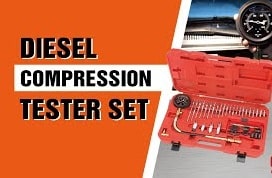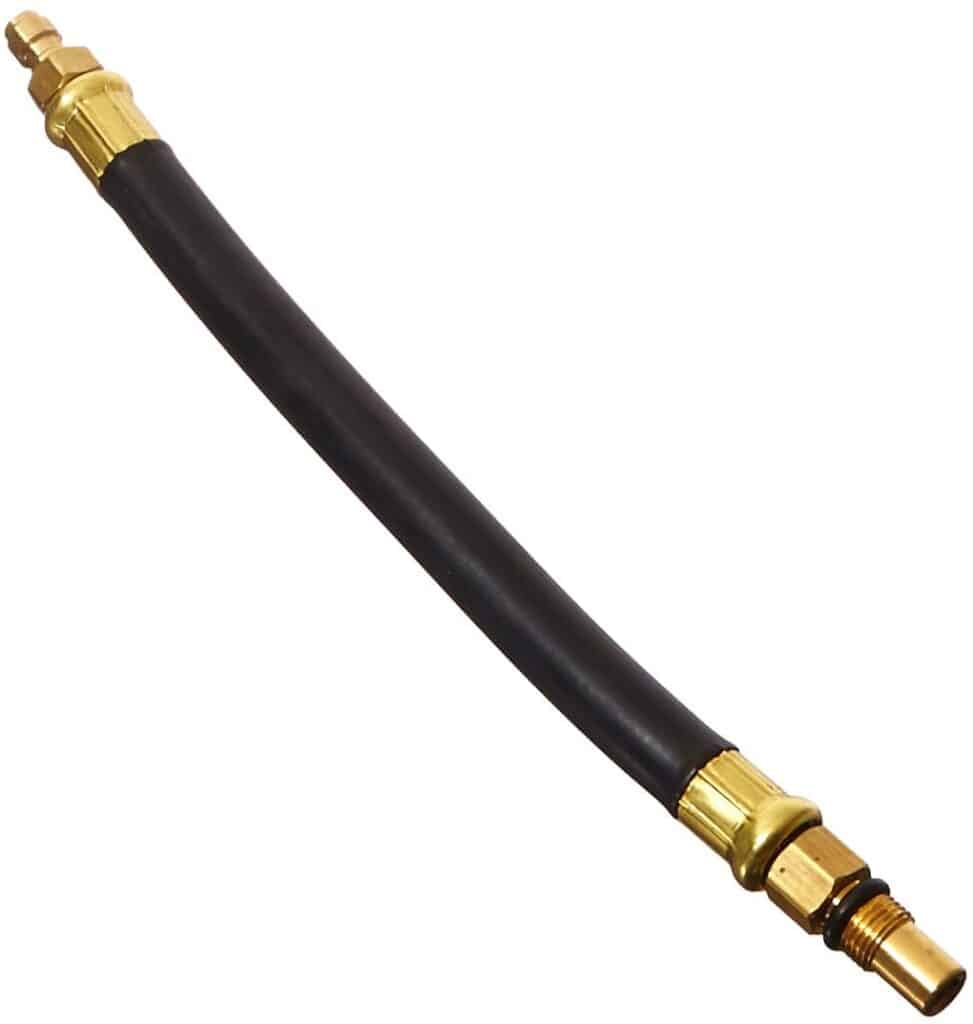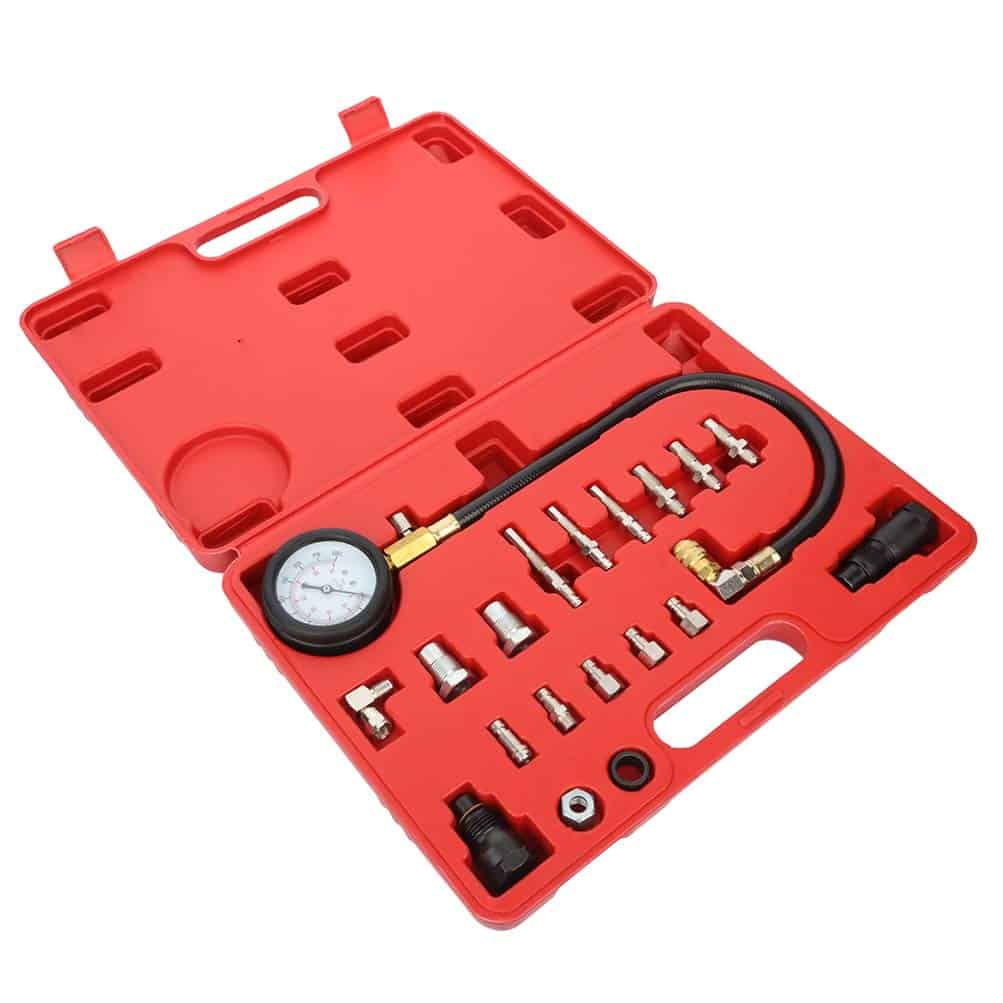The engine compression tests are done to tell the mechanical condition of your car engine. The tests always detect the pressure leaks through the cylinders, etc.; when you want to diagnose any issue with your diesel engine, the best option to go for is doing a compression test. Most people always think that the compression test procedures of the diesel and gasoline engines are the same.
However, diesel engines have a very different procedure. The requirements and the tooling also differ. The diesel engines produce a lot of pressure during the testing, which is very different from gasoline engines. For this reason, the test gauge for the diesel engine must have an excellent psi reading. This article will discuss how to choose a diesel compression tester and how to use them.
How to choose a diesel compression tester

Choosing a diesel compression tester means choosing the best diesel tester according to the features that you need it to have. In this article, we will check the best test gauges required for the diesel compression test.The best test gauges for the diesel engines are of high quality and should read to a maximum of a thousand PSI.
Again, if you choose the test gauge, you should also keep in mind that you should also select the right and the best adapter kit for the vehicle. Below are different types of test gauges that are best for diesel engines and are of reasonable prices.
7 Best diesel test gauges
- OTC 5021

OTC 5021 is a universal diesel engine compression gauge that works to test the compression to the maximum of 1000 PSI to 7000kpa.
Feature of the OTC 5021 universal engine compression gauge
The universal diesel compression valve, as the name suggests, is designed to only work on diesel engines but not any other machines such as gasoline engines.
It tests compression to a maximum of 1000 PSI and 7000 kph. A reduction higher than that is not tested.
It has both a button compression release and check valve.
It has a quick disconnect fitting on the hose end, and the hose connectors are straight with an angle of 45 degrees and have a quick-connect fitting that is included.
The OTC 5021 compression gauge has adapters that are not attached but are provided separately. The adapters are used in specific applications of the diesel engine.
Test kits for diesel compression

The best diesel compression test kits for a mechanic or just anyone who has more than one type of truck to work on should have adapters included. The included adapters are for all the most popular diesel to avoid piece-by-piece buying. The following are the different types of tools that are found in the diesel compression test kit.
- The 14 piece diesel compression tester set
The tester set is made to be used in cars, trucks, and tractors.
Its features
It has a swivel end and a quicker coupler responsible for the faster and easier connection of the adapters.
It works with a compression gauge that tests compression between 0 and 1000 or between 0 and 70 bars. Again it has a release valve and a 14.6” long hose.
Its weight is 11.35 LBS.
Its construction is made of carbon steel, and the tips are hardened. The hose supports high pressure.
The gauge is plated with chrome.
7.3L power stroke adapter kit
When doing the 7.3 compression testing, the best way of performing it is by taking out the glow plugs and installing the special adapter. To install the kit, it is not a must you remove the
The S and G tool aid 35250 diesel engine tester adapter

The s and g tool aid is made of high-quality materials to serve for an extended period. The S$G tool aid contains more than 400 tools that perform the job fast and efficiently, saving time and labor for the technician.
Its features
It is an auto accessory.
It has a package dimension of 10.16 centimeters in length by 9.14centimeters width by 10.2centimeters height.
It is made in China, and the quantity of the package is only 1.
The S$G tool aid is designed to provide high levels of durability.
OTC 6660 compression tester adapter

Features
This adapter works on ford vans and trucks such as the 2003 to 2009 ford diesel engines.
The OTC6660 compression tester adapter fits vehicles with a 6.0L diesel engine.
Again the OTC 6660 compression tester adapter is used with an engine compressor gauge of number 5021.
When performing a compression test, you take out the glow plug and connect the n0 5020 gauge to the glow plug port using the OTC 6660 compression tester adapter.
It is designed with high-quality materials to ensure that the performance is of high quality and ensures that the version is of high quality.
The Cummings adapter kit
When performing a compression test, the 5.9 Cummings adapter kit needs the injectors to be constantly removed. The removed injectors are replaced with eighth NPT fittings. This 1/8 fitting functions with most of the gauges.
The TU-15-26 Lang tools
It is a diesel adapter for compression with package dimensions of 3.25inches length by 10.5inches height to prevent the fuel from 2 inches wide. The whole package weight is one pound. It is manufactured in the United States with part number TU-15-26.
The procedure for testing
- Preparation for the compression testing

The following is a step-by-step procedure on how to prepare for the compression testing.
1. The compression test is performed when the battery is fully charged. A decrease in the battery power when you are about to finish the test; for example, in the last two trials, the compression test reading for those two cylinders is false or low.
2. Ensure that the compression material that you are using matches your engine. For example, diesel engines require a higher compression tolerance gauge than other engines such as gasoline.
3. Ensure that you warm up the engine so that the valves are allowed to sit tight and allow for the pistons’ expansion and proper sealing.
4. Switch the engine off and open the hood.
5. Ensure that the engine has adequate air coming during the test by blocking the throttle open by using a screwdriver.
6. Take out the fuel pump fuse to prevent the fuel from entering the combustion chambers. If you are not aware of the location of the fuse, ensure that you check the user manual. To disable the injection pump on a diesel engine, ensure that the fuel shutoff solenoid is disconnected.
7. Use the remaining fuel in the system lines by starting the engine.
8. The spark plug wire that is close to the front of the engine should be disconnected. After disconnecting the wire, you should ensure that you label it to identify its position on the machine.
9. Repeat the above step on all the spark plug wires. If it is hard to remove any of the spark plugs, ensure that you don’t force it out as it might damage the threads mounting the plug on the head of the aluminum cylinder.
10. Ensure that the spark plug is well cleaned. The spark plug is cleaned around to ensure that the dirt and the waste do not fall into the cylinders as you remove the spark plugs. When the debris enters the cylinders, it may cause compression leakages due to the scratching of the wall.
11. Use a spark plug socket, ratchet, and its extension to take out the spark plugs. Removing the plugs allows easy turning of the engine during the tests. Ensure you mark the place of every spark so that during the reinstalling, you place the pins at their corresponding cylinder. Again, to connect the combustion gauge on a diesel engine, you should disconnect the injectors.
12. Ensure that the ignition system of your vehicle is disabled.
The engine compression test
The testing procedure varies depending on the kind of engine you are using. However, the overall process for most of the machines is the same. The following is the general procedure that one can use to do compression testing.
1) Deactivate the fuel injection.
2) To reduce the compression resistance, take out all the glow plugs.
3) Please choose the right and matching adapter and insert it into the glow plug hole after removing the injector.
4) Connect the adapter and the test gauge.
5) Ensure that the ignition is deactivated to prevent the starting of the engine.
6) The next step is activating the starter. The starter is activated directly using a remote switch and a test jumper.
7) After that, you are supposed to do cranking on the engine for about 4 to 5 revolutions.
8) Check the gauge and record its final reading.
9) Repeat the procedure for all the cylinders and make a comparison of the pressures.
Conclusion
Finally, the diesel compression tester is used to do the engine compression test. The engine compression test helps the vehicle owner be aware of the condition of their vehicle’s engine without having to disable it.
When the engine performs poorly, the compression test helps you know the underlying problems that make it function in such a way. Once you see the problem, it is easy for you to know the best steps to take for you to fix the issues.
